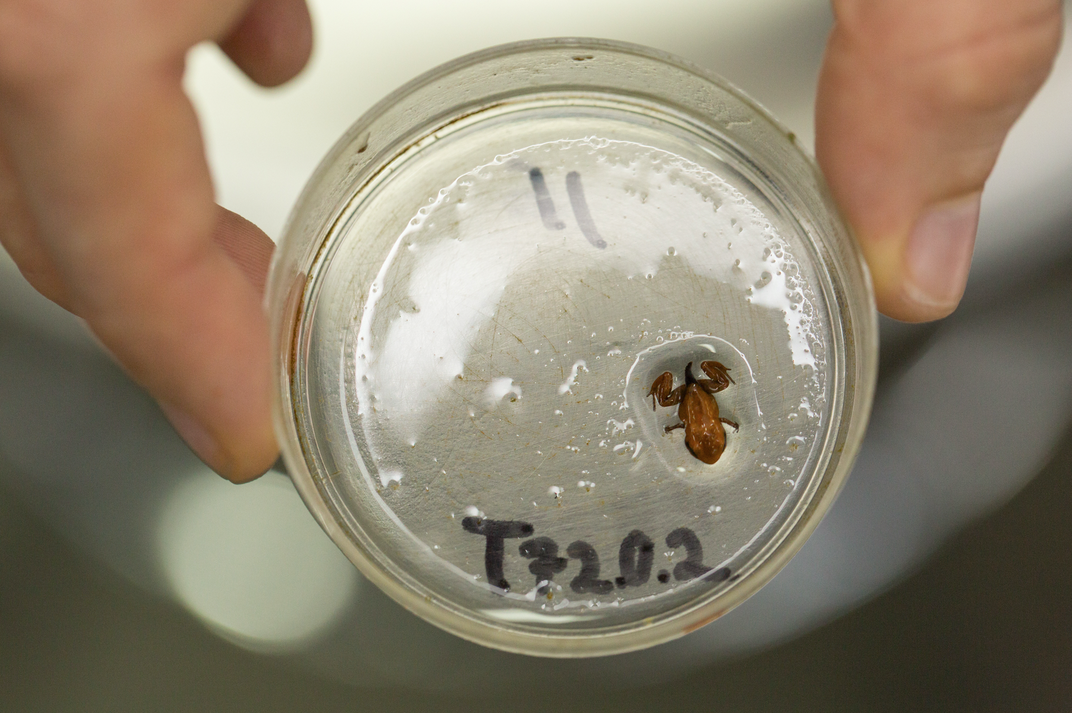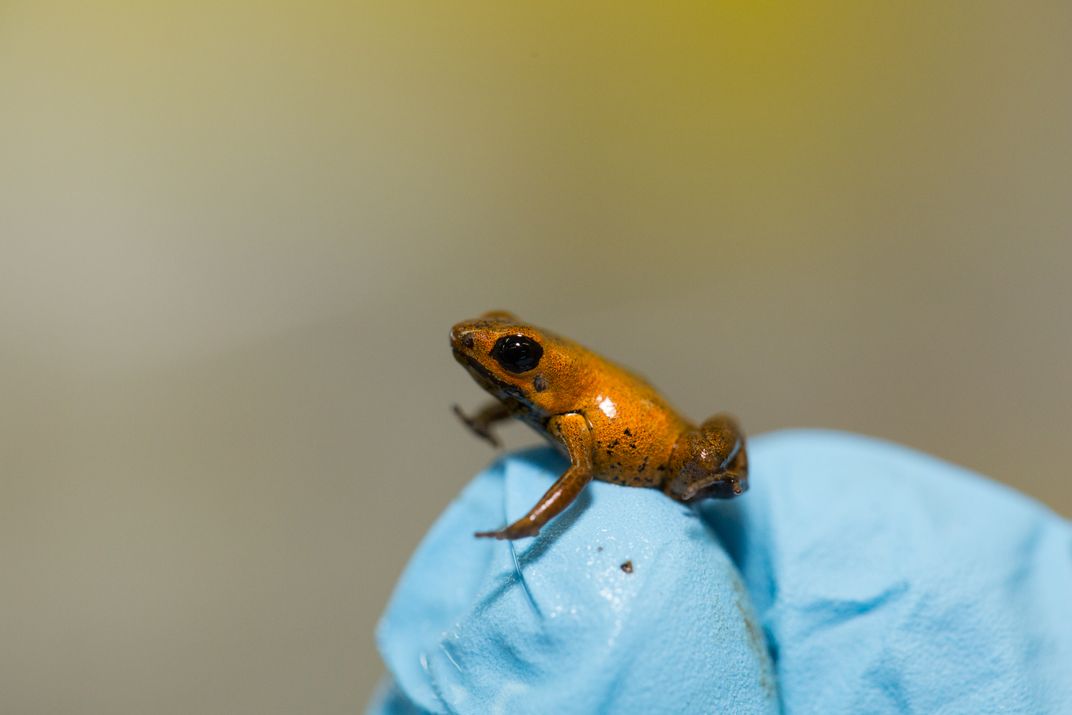Could Quality Of Care Help Address Captive Amphibian Diseases?
/https://tf-cmsv2-smithsonianmag-media.s3.amazonaws.com/blogging/featured/Screen_Shot_2018-08-29_at_3.27.59_PM.png)
When you watch Kathleen Higgins care for her captive Andinobates geminisae populations, you know you have met a frog lover. This species of tiny orange frogs, discovered in Panama in 2014, is being bred in captivity at the Smithsonian’s Gamboa Amphibian Rescue and Conservation Center.
Its survival in the wild is at risk, but not because of the chytrid fungus, the primary threat to most endangered frogs at the Center. A. geminisae faces habitat loss. Specimens have only been found in a reduced area near Donoso in Panama’s Colon province. Its habitat is very limited in space and the site was recently leased to a copper mining project. As the land is developed, the frogs may be lost.
In the past year, Higgins, a master’s degree candidate at Simon Fraser University, became their primary caregiver at the Center. She helped conduct research to better understand spindly leg syndrome, a common deformation affecting the front legs of frogs kept in captivity. But in the case of A. geminisae, it was even worse than usual.
“We were losing over 50 percent of our tadpoles,” said Higgins.
Although spindly leg syndrome does not directly kill them, the froglets end up starving to death. They can’t move to feed themselves.
Kathleen wanted to find out if water nutrient content would impact its occurrence. So she started experimenting, adding different vitamins to the frogs’ water.
“I didn’t find anything,” she recalled. There were no significant differences in the incidence of spindly leg syndrome for any of the different vitamin treatments. However, she noticed an enormous decrease in spindly leg syndrome in all of the animals: it dropped from 67 percent down to 3 percent.
Although she did not gather data that would help to explain what happened, Higgins believes the increase in survival of her frogs could have been due to the way she looked after them. Throughout her experiment, she changed their water frequently and fed them constantly. Their quality of care was greater than most captive frogs receive.


“Something changed when I started. What I observed was much more significant than any treatment I did with the vitamins,” she said.
Captive amphibians have always suffered from disease, but the veterinary literature on the subject is minimal. As captive breeding became critical for conservation due to growing threats to their survival, scientists started developing better zookeeping practices.
Diseases of captive populations are just one of many challenges to amphibian conservation. The first difficulty is getting to sites where the frogs live to collect them. “Another problem is when we can't find frogs at the sites and have to spend a lot more time searching for them,” said Jorge Guerrel, program manager of the Center.
And not all species thrive in captivity. “Frogs that are hard to breed in conservation programs will very likely disappear or their populations in nature will be very limited,” added Guerrel.
While programs like the one at the Gamboa Amphibian Rescue and Conservation Center
continue to ensure that endangered species don’t become extinct, the second part of the equation has yet to be resolved. How to reintroduce these frogs successfully into the wild? This is a key challenge of the Smithsonian Conservation Commons initiative, which aims to leverage scientific knowledge globally to sustain healthy, biodiverse ecosystems. As the threat of habitat loss is out of the scientific community’s hands, finding a cure for the chytrid fungus continues to be the main focus of amphibian conservation research.
The Conservation Commons is an action network within the Smithsonian Institution (SI), highlighting the relevance of science and innovative interdisciplinary approaches across science and culture to on-the-ground conservation worldwide.

